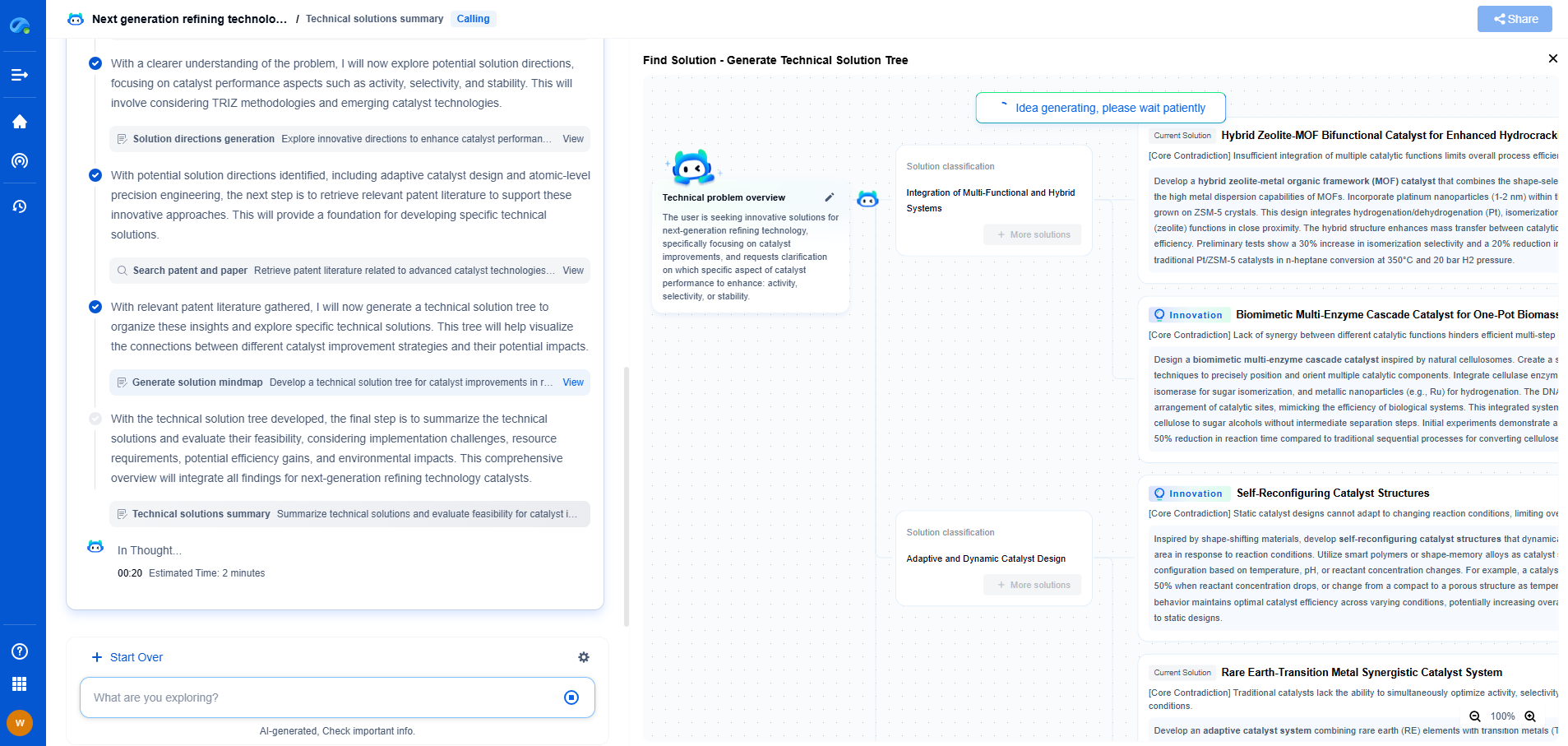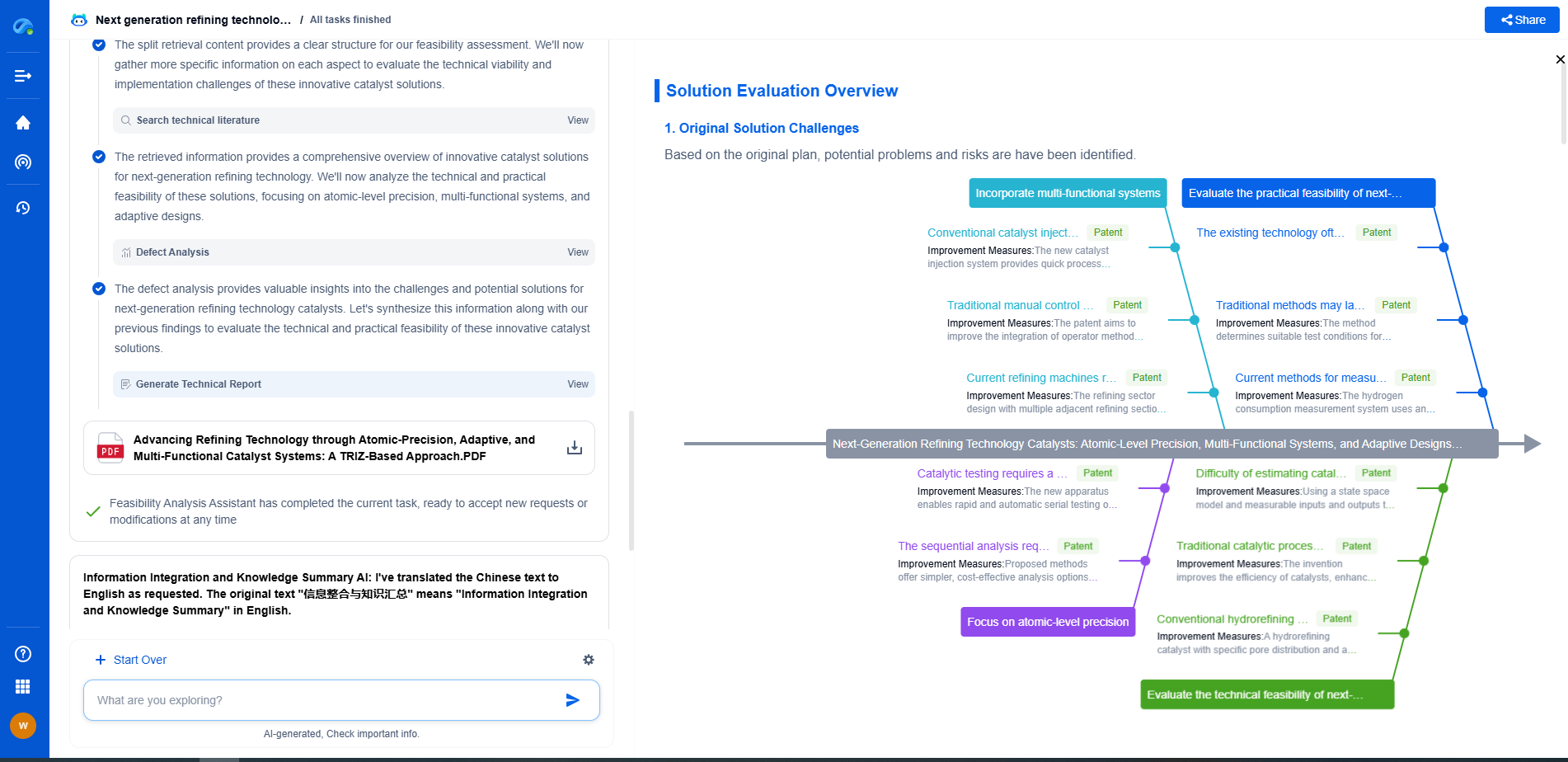What Is Structural Health Monitoring? Principles and Vibration-Based Techniques
JUL 16, 2025 |
Understanding Structural Health Monitoring
At its core, structural health monitoring involves the use of various sensing technologies to assess the condition of a structure in real-time. The primary goal is to identify changes that could indicate damage or deterioration, allowing for timely intervention. SHM systems typically consist of sensors, data acquisition systems, and analytical tools that interpret data to provide insights into the structural integrity.
The Importance of SHM
The ability to detect and address structural issues early brings numerous benefits. First and foremost, it enhances safety by preventing potential failures that could cause injuries or loss of life. Economically, SHM extends the lifespan of structures by ensuring they remain in optimal condition, reducing the need for expensive repairs or replacements. Moreover, it also aids in compliance with safety regulations and standards, which is crucial for infrastructure management.
Principles of Structural Health Monitoring
The principles of SHM are based on the premise that structural changes, such as cracks or material degradation, alter the structure’s physical properties. These changes can be detected through various indicators such as shifts in vibration patterns, changes in natural frequencies, or variations in modal shapes. By monitoring these indicators, SHM systems can infer the presence and severity of damage.
Vibration-Based Techniques in SHM
Among the various SHM techniques, vibration-based methods are widely used due to their effectiveness in monitoring structural integrity. These techniques rely on the fact that any damage in a structure affects its dynamic properties, such as natural frequencies and mode shapes.
Modal Analysis
Modal analysis is a fundamental technique in vibration-based SHM. It involves measuring the structure's response to vibrations and analyzing its mode shapes and natural frequencies. Changes in these parameters can indicate the presence and location of damage. Modal analysis is particularly valuable in large structures like bridges and high-rise buildings, where visual inspections are challenging.
Frequency Response Functions
Frequency response functions (FRFs) are used to establish the relationship between input forces and output responses in a structure. By analyzing the FRFs, engineers can detect anomalies that suggest damage. This method is useful for pinpointing specific areas where structural integrity is compromised.
Operational Vibration Monitoring
This approach involves monitoring the vibrations that occur during the normal operation of a structure. Sensors installed at strategic locations collect data which is then analyzed to detect any deviations from normal behavior. This technique is advantageous as it does not require the application of external forces, making it suitable for continuous monitoring.
Challenges and Future Directions
Despite the advantages, SHM faces several challenges. The complexity of data interpretation, the need for advanced sensor technology, and the high cost of implementation are some of the hurdles. However, advancements in technology, such as machine learning and the Internet of Things (IoT), are paving the way for more efficient and cost-effective SHM solutions.
The future of SHM lies in robust, intelligent systems that can autonomously identify and assess structural health. As technology continues to evolve, we can expect more sophisticated and accessible SHM approaches that will further enhance the safety and durability of our infrastructure.
In conclusion, structural health monitoring, particularly vibration-based techniques, plays a vital role in ensuring the safety and performance of engineering structures. By leveraging advancements in technology, SHM provides a proactive approach to infrastructure management, promising a future where structural failures are minimized, and maintenance practices are optimized.
In the world of vibration damping, structural health monitoring, and acoustic noise suppression, staying ahead requires more than intuition—it demands constant awareness of material innovations, sensor architectures, and IP trends across mechanical, automotive, aerospace, and building acoustics.
Patsnap Eureka, our intelligent AI assistant built for R&D professionals in high-tech sectors, empowers you with real-time expert-level analysis, technology roadmap exploration, and strategic mapping of core patents—all within a seamless, user-friendly interface.
⚙️ Bring Eureka into your vibration intelligence workflow—and reduce guesswork in your R&D pipeline. Start your free experience today.
- R&D
- Intellectual Property
- Life Sciences
- Materials
- Tech Scout
- Unparalleled Data Quality
- Higher Quality Content
- 60% Fewer Hallucinations
Browse by: Latest US Patents, China's latest patents, Technical Efficacy Thesaurus, Application Domain, Technology Topic, Popular Technical Reports.
© 2025 PatSnap. All rights reserved.Legal|Privacy policy|Modern Slavery Act Transparency Statement|Sitemap|About US| Contact US: help@patsnap.com

